Recognizing the enemy: What does a drywood termite look like?” This blog unlocks the mystery behind these wood-destroying insects.
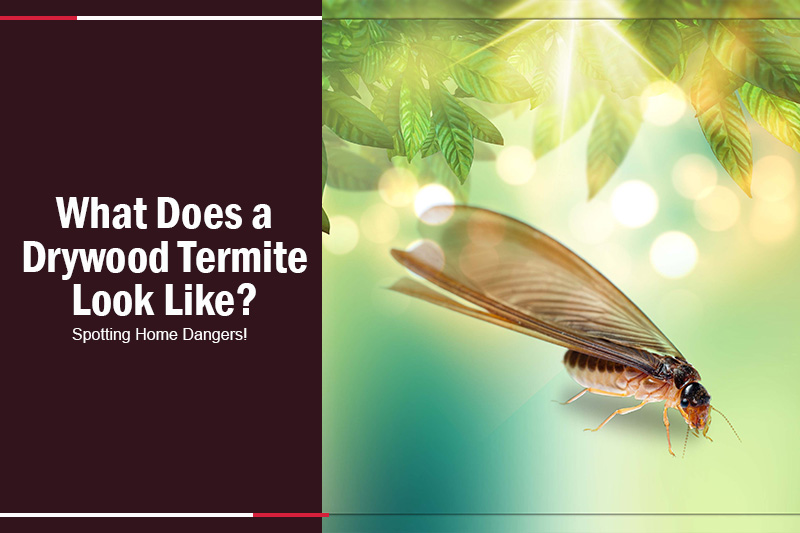
1. What does a Drywood Termite look like?
Drywood termites vary in size depending on their job in the group. Soldier termites are usually about three-eighths of an inch long. The termites that can reproduce, including both males and females, are typically about half an inch in size.
When it comes to color, drywood termites can look different. The ones with wings, called alates, might have wings that are clear or a bit gray. The main body of a drywood termite is usually a light brown, but it can range from dark brown to a light, yellow-tan.
The wings are an important part of these termites, especially for the alates. They have two pairs of wings, front and back, that are the same size and either grayish or clear. The front wings have a special pattern of lines that helps tell them apart from other termites.
Finally, drywood termites have noticeable parts called mandibles at the front of their head. These look like small jaws and are an important part of their body.
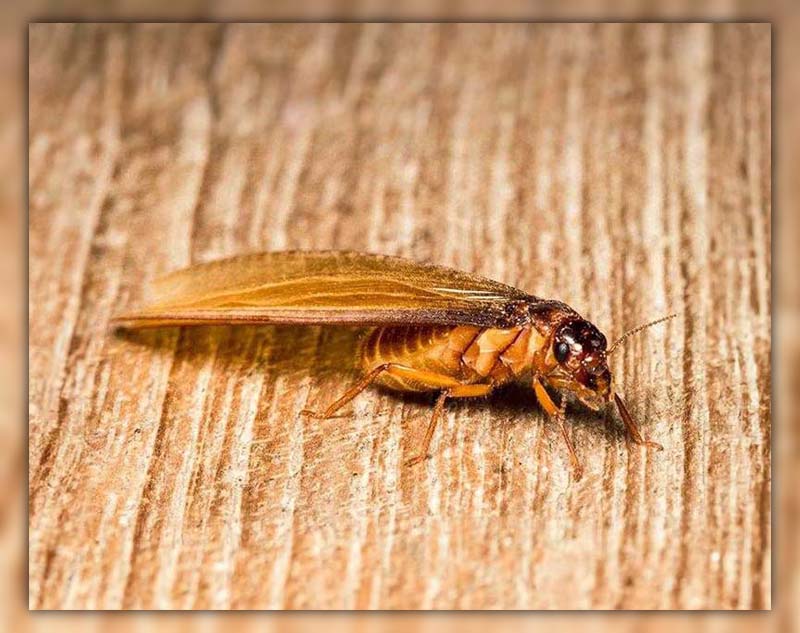
2. Signs of Drywood Termite presence
Detecting the presence of Drywood termites can often be done by observing several key signs. One common indication is spotting a group of reproductive termites, known as a swarm, emerging from tiny holes in wood. This usually signals an ongoing infestation.
Other telltale signs to look out for include:
- The wood’s surface may show blister-like formations. This happens when termites tunnel very close to the outer layer of the wood.
- Small holes in the wood, often referred to as “kick-out holes.” Termites create these openings to remove their waste from their tunnels.
- Accumulation of pellet-shaped droppings near these holes. These droppings, or “frass,” typically fall to the ground just outside the kick-out holes.
- The color and size of drywood termite droppings are noteworthy. They often match the color of the wood they’ve been consuming and are smaller than rice grains. You’ll usually find these piled up beneath areas where the wood is damaged.
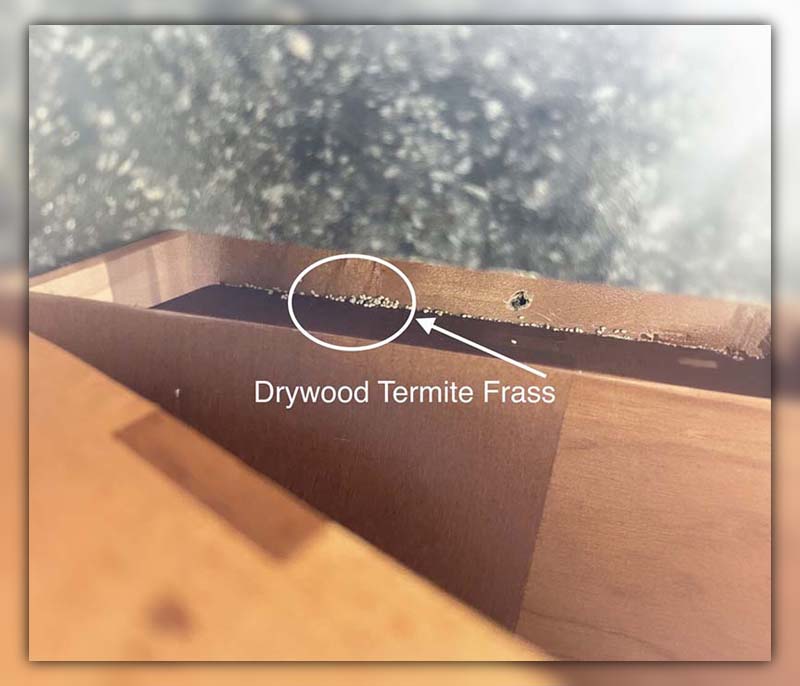
3. Preventive measures for Drywood Termites
To reduce the likelihood of drywood termite infestation in your home, there are several effective preventative steps you can take:
- Store firewood and lumber at a distance from the foundation of your house. By doing this, you create a physical barrier that makes it harder for termites to access your home.
- Install fine mesh screens, specifically those with a 20 mesh size, on all potential entry points. This includes doors, windows, vents, and other openings, particularly those leading to attics and crawl spaces. These screens act as a physical barrier to keep termites out.
- Seal any exposed wood around your home. This includes both interior and exterior wood surfaces. You can use paint, varnish, or a sealant to do this. It’s important to apply these coatings evenly and to ensure that all small imperfections like nail holes or cracks are completely covered. This step not only beautifies the wood but also acts as a deterrent to termites looking for an entry point.
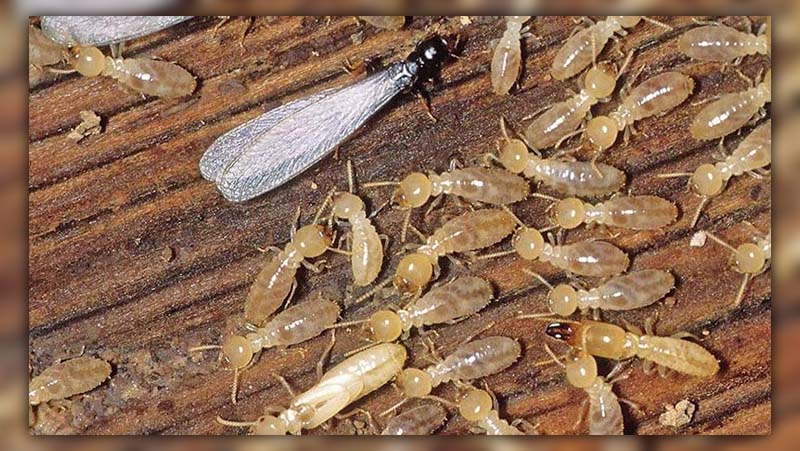
4. Timing of Drywood Termite swarms
Drywood termites typically swarm from late summer to fall, spanning August to November. During this period, swarms seek new locations, including homes, to infest wood.
Infestations can cause rapid structural damage within months of establishing a colony.
Notably, these termites create “kick-out” holes to expel waste, forming mounds that resemble sawdust or fine sand—clear indicators of their presence and activity.
5. Behaviors and Habits of Drywood Termites
Drywood termites, like other termite species, operate within a structured caste system. The establishment of a new colony begins when a queen termite selects an ideal location, often in the rafters of a house, and pairs with a king to start laying eggs. This initiation marks the beginning of an infestation in structures such as homes.
The eggs eventually hatch into worker termites, whose responsibilities include consuming wood (thus causing damage) and taking care of the colony. As the colony matures, some termites evolve into either reproductive or soldier castes. The reproductive termites develop wings, swarm out, and establish new colonies, while the soldier termites are tasked with defending their colony from threats like ants and other termites.
A key aspect of drywood termites’ behavior is their diet, which consists primarily of cellulose found in wood and other plant materials. This dietary preference makes wooden structures like homes, fences, and trees particularly susceptible to their infestation.
Unlike some other species, drywood termites consume wood across the grain, affecting both the softer springwood and the harder summerwood. This method of feeding can lead to extensive structural damage, as the termites’ tunneling activities weaken the wood’s integrity. The extent of damage often correlates with the size and complexity of the colony’s tunnel network.
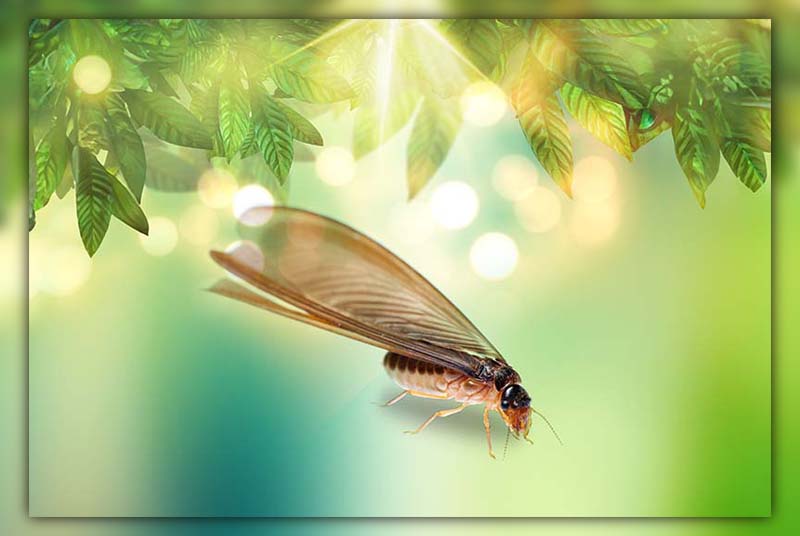
6. Environments Preferred by Drywood Termites
Drywood termites in the United States are typically found in a specific geographical band that stretches from Florida to California. This region is characterized by warm to tropical climates, ideal for these termites, as they thrive in areas with abundant wooden structures and mild winters.
Unlike subterranean termites, drywood termites have unique environmental preferences. They do not require moist soil or a nearby water source for survival. This independence from external moisture sources means that these termites are often found in dry wood located above ground level. The wood they consume serves a dual purpose: it’s both their food and their source of moisture. This ability to extract necessary moisture from their food allows them to inhabit drier environments where other termite species might not survive.
Conclusion
In conclusion, understanding “What does a drywood termite look like” is a crucial step in safeguarding your home against these silent invaders.
For more informative and practical guides on tackling various pests, don’t forget to explore more blogs from Pestweek.

Calina Mabel has over 15 years of experience in the field of journalism and communications. Currently, Calina Mabel is the Content Writer for categories such as Cockroach, Ants, Bed Bugs, Mosquito, Rodent, Termite, and Flies on Pestweek.com. She aims to build content for these categories with a focus on providing valuable and accessible information to readers, in order to create the world’s largest knowledge community about Pests.
All content written by Calina Mabel has been reviewed by Emily Carter.

